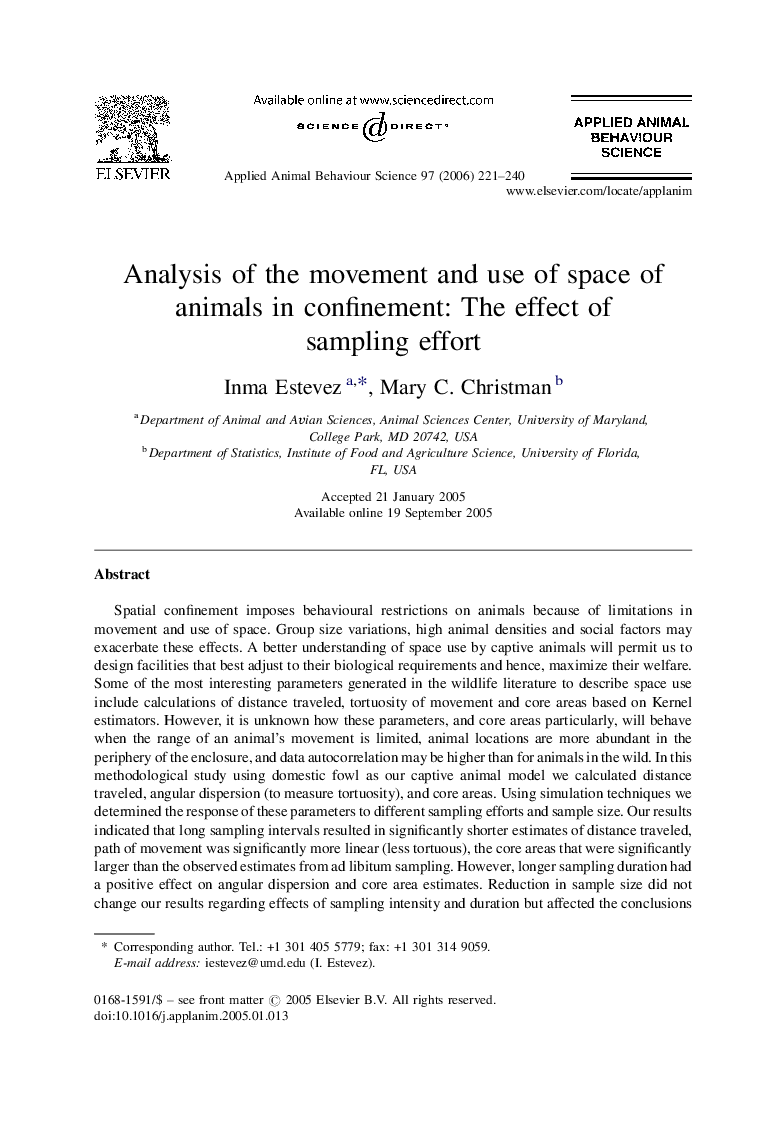| Article ID | Journal | Published Year | Pages | File Type |
|---|---|---|---|---|
| 4524240 | Applied Animal Behaviour Science | 2006 | 20 Pages |
Spatial confinement imposes behavioural restrictions on animals because of limitations in movement and use of space. Group size variations, high animal densities and social factors may exacerbate these effects. A better understanding of space use by captive animals will permit us to design facilities that best adjust to their biological requirements and hence, maximize their welfare. Some of the most interesting parameters generated in the wildlife literature to describe space use include calculations of distance traveled, tortuosity of movement and core areas based on Kernel estimators. However, it is unknown how these parameters, and core areas particularly, will behave when the range of an animal's movement is limited, animal locations are more abundant in the periphery of the enclosure, and data autocorrelation may be higher than for animals in the wild. In this methodological study using domestic fowl as our captive animal model we calculated distance traveled, angular dispersion (to measure tortuosity), and core areas. Using simulation techniques we determined the response of these parameters to different sampling efforts and sample size. Our results indicated that long sampling intervals resulted in significantly shorter estimates of distance traveled, path of movement was significantly more linear (less tortuous), the core areas that were significantly larger than the observed estimates from ad libitum sampling. However, longer sampling duration had a positive effect on angular dispersion and core area estimates. Reduction in sample size did not change our results regarding effects of sampling intensity and duration but affected the conclusions for group size effects. We conclude that priority should be given to increase sampling effort versus concerns arising for potential data autocorrelation.
